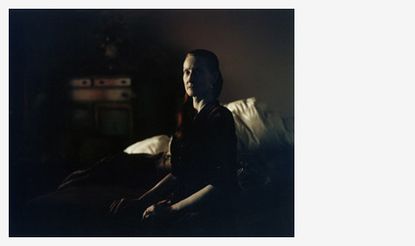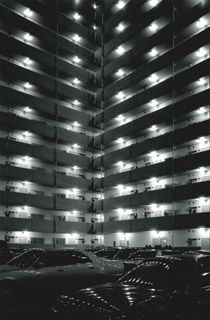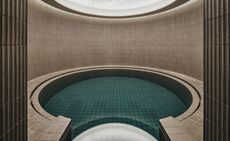Rencontres d'Arles, 2009

This year’s photography festival, which every year descends on the French town of Arles for two months, featured pioneering American photographer Nan Goldin as its guest curator. Showing her own work, she also invited photographers whose work fitted into the theme ’40 Years of Disruption’. There was plenty of unflinching, uneasy subject matter on show, some of it gratuitously so, some of it carefully considered. Below, James Reid, Wallpaper* Photography Editor, picks his higlights.

See W* Photography Editor James Reid's highlights from the Rencontres d'Arles 2009
In a year when disruption and disruptive work was an invited theme, two shows particularly stood out, for their raw power, honesty and their ability to create a sense of disbelief in the viewer.
The James Allen Collection (from the Center [sic] for Civil and Human Rights in Atlanta) of commercially available postcards celebrating lynching in the Deep South (yes you read that correctly, postcards) on display in a show entitled Without Sanctuary, was particularly unsettling.
At a time when a black president acceded to the presidency of the USA, it beggars belief that not so many years ago, these brutal deaths of black men were viewed as town spectacles and celebrated commercially. Although these photographs are by no means technically accomplished, the power of their content was undeniable and left many viewers moved, some to tears.
The second show, which was the talk of much of the festival, was that of young American photographer Leigh Ledare. Invited as part of a group show of Goldin’s guests, Ledare’s show was a brutally intimate exploration of his mother’s sexuality and her coming to terms with the aging process. Featuring moving, intimate portraits and incidental shots of her at home, alongside graphic shots of her engaged in sex acts with younger men - which Ledare had mixed with archive shots of her in her prime and deeply personal letters from mother to son - this show really stood out.
This process of confronting personal issues so frankly and explicitly through his work – using the camera as therapy for truly disconcerting family troubles - really sets him apart from most photographers allegedly following in Goldin’s footsteps. To my mind, falling under her umbrella actually does Ledare a disservice, since his work is very much his own and he deserves credit for following a singular path.
Wallpaper* Newsletter
Receive our daily digest of inspiration, escapism and design stories from around the world direct to your inbox
A consistently interesting and innovative Japanese photographer, Naoto Hatakeyama’s work could be considered disruptive in a wry, subtle way – unlike much of the other more brutal work on show this year - making the viewer look twice and question what exactly they were seeing.
There were two of her series on show, both black and white. The first appeared to be fairly simple straightforward scenes of New York City – the buildings and the long, stretching avenues so familiar from film and photographs. However, on closer inspection your realise that something is amiss. The shots are actually taken at a scale model of Manhattan in a theme park near Tokyo, lit and shot in such a clever way – contre jour or flare bouncing off the windows – that there are barely any signifiers to identify if they are real or not. Only in one shot does Hatakeyama give the game away, a visiting tourist appearing like a towering giant amongst the model skyscrapers.
The second series also plays with the viewers sense of perception; as you enter the gallery, framed black and white prints of ambiguous, urban architectural studies shot at night appear to be glowing, the whites almost phosphorescent. Hatakeyama has cleverly concealed miniature light-boxes within normal-looking white print frames, and the nocturnal studies are actually backlit transparencies, which create a mesmerising effect and cast an eerie light in the gallery space.
In the off-festival shows there were various emerging photographers showing interesting work, a welcome relief from the traumas explored in the main shows. Wallpaper* stalwart Joël Tettamanti’s show was particularly nicely realised, his stunning large-scale landscapes and studies, from Qaqortoq to Necaxa, pasted directly on to the gallery walls, so the whole show appeared to be wallpapered. This questioned the sanctity and reverence of the print as an object, and made the whole show more of an immersive installation inside his Local Studies project.
Faustine Ferhmin’s ‘Pachacuti' series, on show in the Paysages Elementares exhibition, also displayed a real vision combined with technical prowess.
The Incan term Pachacuti means the regular cycles of destruction and recreation of the natural world, and Ferhmin’s images of strange, other-worldly geophysical forms and rock formations were beautifully printed, the palette and tone reminiscent of work by Jem Southam whilst the subject matter was from another place entirely.
-
 Lexus installation explores time at Milan Design Week 2024
Lexus installation explores time at Milan Design Week 2024Lexus brought designer Hideki Yoshimoto’s ‘Beyond the Horizon’ to Milan’s Art Point, part of its ongoing series of collaborations with Fuorisalone
By Nargess Shahmanesh Banks Published
-
 Cult 1960s boutique Granny Takes A Trip gets a sustainable reboot
Cult 1960s boutique Granny Takes A Trip gets a sustainable rebootFounded on King’s Road in 1966, ‘radically creative’ fashion store Granny Takes A Trip is being reimagined for a new generation. Dal Chodha takes a closer look
By Dal Chodha Published
-
 Find yourself at Six Senses Kyoto, the brand's breathtaking Japan debut
Find yourself at Six Senses Kyoto, the brand's breathtaking Japan debutSix Senses Kyoto opens its doors boasting tranquil, luxurious interiors by Blink Design Group
By Danielle Demetriou Published